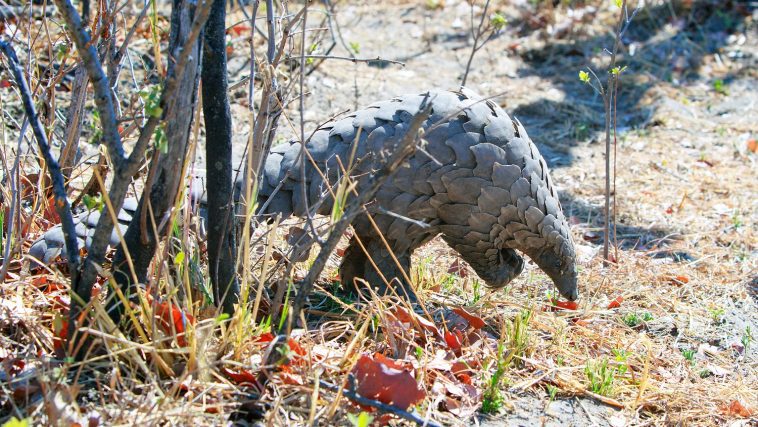People who have studied ants estimate their worldwide number to be around twenty million billion. That’s a lot of ants. And their queens are always producing more! Something has to eat these little creatures, or we would all be waist-deep in these insects.
The problem with eating ants is that they are not highly nutritious. Ants and their close cousins, the termites, are mostly exoskeleton with only a little “meat.” So, to live on a diet of ants and termites, you have to eat a lot of them; basically, God would have to design an animal as an ant-eating machine.
The Giant Anteater
The giant anteater grows to be about eight feet long, including the tail. Their home range is the grasslands of Southern Brazil and northern Argentina. There, the landscape is scattered with termite mounds.
God has given the giant anteater the right tools to attain their dinner.
First, these mammals have large strong claws and powerful muscles to break into the rock-hard termite mounds. They also have a long sticky tongue they use to penetrate the tunnels to extract the termites. This tongue is 24 inches long and can move in and out at a speed of around 160 times per minute.
When feeding, giant anteaters swallow at a higher rate than most other mammals; it’s almost as if they were drinking termites. These large mammals have no teeth, so before being swallowed, the termites and ants are crushed against a palate that is in the lower jaw.
The giant anteater’s stomach has folds that are hardened, and it uses strong contractions to grind up its prey. The small amount of sand and soil taken up with the termites helps in this digestion process.
These mammals only visit each termite mound for a few minutes before the soldier termites drive them away. This means the termites can repair the mound and replace the numbers being eaten. The entire mound is not destroyed, instead, the area is basically being harvested. A typical giant anteater visits 100–200 mounds per day and eats up to 30,000 insects.
Even eating these insects by the thousands, termites are still low in food value. The giant anteater compensates by sleeping 15 hours a day. It also has a low body temperature of 91 degrees F. It is also a slow-moving animal that plods along from termite mound to termite mound. When it can do less energy expenditure, it does.
The Pangolin
Pangolins are another mammal especially designed to eat ants. There are species of pangolins that range in size from 1 to 3 ½ feet long. They live in Africa south of the Sahara and in Southern Asia. Pangolins are the only mammals that are protected by large scales made of keratin, which is the same material as your fingernails.
They live in hollow trees or dig underground burrows. Their diet, like the giant anteater, consists mainly of ants and termites, which they capture using their long sticky tongue. In fact, these mammals have the longest tongues in relation to body size of any mammal. The largest pangolins have a tongue 16 inches long.
Their scales act as armor plating that protects them from any predator, and the pangolin also has the ability to roll up in a ball. And as if this weren’t enough, this mammal can emit a noxious-smelling chemical from glands near the anus.
They have very sharp claws and powerful muscles to dig into any ant or termite nest. Pangolins do not have any teeth and thus cannot chew their food. Instead, they swallow small stones that help them grind up ants. Their stomach is covered with keratinous spines that help in grinding up and digesting their prey.
God, in his infinite wisdom, designed animals to help balance his creation. Even animals that eat ants and termites.
For you are great and do marvelous deeds; you alone are God. Psalm 86:10
By Doug Velting
Creator of the website easycreationlessons.com







